Learning Insight ⬇
Accounting Terms like:
|| Business Transactions # | Account # | Capital # | Drawings # | Liabilities (Internal, External, Long-term and Short-term) # | Assets (Tangible and Intangible, Fixed, Current, Liquid and Fictitious) # | Receipts (Capital and Revenue) # | Expenditure (Capital, Revenue and Deferred) # | Expense # | Income # | Profit # | Gains # | Losses # | Purchases # | Sales # | Stock # | Debtors # | Bills Receivable # | Creditors # | Bills Payable # | Goods # Cost # Vouchers # | Discount # (Trade Discount Cash Discount) | Books of Accounts # | Entry # | Debit # Credit # | Proprietor # | Receivable # |Payable # | Depreciation # | Cost of Goods Sold # | Bad Debts # | Insolvent # | Solvent # | Book Value # | Balance Sheet # | Entity # ||
In business, various accounting terms are used. It is necessary to understand these accounting terms they being used in business and being a part of the standard accounting terminology.
Business Transaction: The term ‘Business Transaction’ means a financial transaction or event entered into by the parties and recorded in the books of accounts.
It is a financial event, which can be expressed in terms of money and brings change in the financial position of an enterprise.
It is concerned with two parties (i.e., accounts) involving the transfer of exchange of goods or services.
Examples of business transactions are sales of goods, purchase of goods, receipt from debtors, payment made to creditors, purchase or sale of fixed assets, payment of dividend, etc.
Characteristics of a Business Transaction
- It is concerned with money or money’s worth of goods or services.
- It arises out of the transfer of exchange of goods or services.
- It brings about a change in the financial position (assets and liabilities) of a business concern.
- It has an effect on the accounting equation of any business firm.
- It has dual aspect or side- ‘receiving’ (Debit) and ‘giving’ (Credit) of the benefit.
In other words, every transaction has two sides-one side is ‘receiving’ and the other side is ‘giving’ the benefit.
A transaction may be a cash transaction or a credit transaction. When the amount is transacted immediately on entering into a transaction it is a cash transaction and promise to pay later, it is a credit transaction. Transaction may be external (between a business entity and a second party, for example, goods sold on credit to Z) or internal (does not involve second party, e.g., depreciation charged on machinery).
Account: Account is a summarised record of transactions relating to a particular head at one place It records not only the amount of transactions but also their effect and direction.
Capital: Capita is the amount invested by the proprietor or partner in the business. It may be in the form of money or assets having money value. It is a liability of the business towards the proprietor or partner. It is so because under “Business Entity Concept”, business is considered to be a separate and distinct entity from its owner.
Capital is also known as Owner’s Equity or Net Worth. It is always equal to assets less liabilities. This can be expressed as:
Capital = Assets – Liabilities
Drawings: It is the amount withdrawn or goods taken by the proprietor for his personal use. Goods so taken by the proprietor are valued at purchase cost. Drawings reduce the investment (or capital) of the owners.
Liabilities: Liabilities mean the amount owed (payable) by the business to outsiders and to the proprietors. Various kinds of liabilities are:
i). Internal Liability: Internal Liability is the amount owed by the business to the proprietor of the business. It is represented in the Balance Sheet as capital and free reserves. It is so because under the Business Entity Concept, transactions are recorded taking business to be an entity distinct and separate from its owner.
ii). External Liability: External Liability is a liability that is payable to outsiders, i.e., other than the proprietors. External liability arises because of credit transactions or loans raised. Examples of External Liabilities are creditors, bank overdraft, bill payable, outstanding liabilities.
Liabilities can be further classified into:
Iii) Long-term Liabilities: Long-term Liabilities are those liabilities which are payable after a longer period, (more than a year). Examples of Long-Term Liabilities are long-term loans, debentures, etc.
iv) Current Liabilities: These are those liabilities which are payable within a year. Examples of Current Liabilities are creditors, bill payable, short-term loans, etc.
v) Contingent Liabilities: Contingent Liabilities are those liabilities which may or may not arise in future depending on the happening of an event. For example: Bills Receivable discounted. It will become a liability if it is dishonored on the due date. These are shown as a footnote of the Balance Sheet.
Assets: Assets are property or legal rights owned by an individual or business to which money value can be attached. In other words, anything which will enable the firm to get cash or a benefit in the future, is an asset. Examples of assets are land, building, machinery, furniture, stock, debtors, cash and bank balances, etc.
“Assets are future economic benefits, the rights, which are owned or controlled by an organisation or individual.” -Finney and Miller
“Assets are property or legal rights owned by an individual or business to which money value can be attached.” -R.Brochington
“Assets are valuable resources owned by a business which are acquired at a measurable money cost”. -Prof. R.N. Anthony
What emerges from the above definition is that an asset should have the following characteristics:
- It should be owned (i.e., property) by an individual or an organisation (business or non-business).
- It may be in the tangible (physical) form or intangible form.
- It should have some value attached to it.
- It should be capable of being measured in money terms.
Assets can be classified into:
1). Tangible Assets: Tangible Assets are those assets which have physical existence, i.e., they can be seen and touched. Examples of Tangible Assets are land, building, machinery, computer, furniture, goods, etc.
2) Intangible Assets: Intangible Assets are those assets which do not have physical existence, i.e., they can not be seen and touched. Examples of Intangible Assets are patents, goodwill trade-mark, etc.
3) Fixed Assets: Fixed Assets are those assets which are acquired not with the purpose to resell but to facilitate business operations and increase the earning capacity of the business by employing them. Example of Fixed Assets are land, building, machinery, computers, vehicles, furniture, etc. Fixed Assets are usually shown as the first item in the Balance Sheet.
4) Current Assets: Current Assets are those assets which are retained in the business with the purpose to convert them into cash within a short period say, one year. For example, goods are purchased with a purpose to resell and earn profit, debtors exist to convert them into cash, i.e., receive the amount from them, bills receivable exist again for receiving cash against it, etc.
Prepaid expenses are also classified as Current Assets although they cannot be converted into cash. They are so classified because benefit from such expenses when paid has not fully exhausted, i.e., it will be available in the next accounting year also.
5) Liquid Assets: Liquid Assets are those assets which are either in the form of cash or can be converted into cash within a very short period. Examples of liquid assets are: cash, bills receivable and debtors, etc.
6) Fictitious Assets: Fictitious assets are those assets which are neither tangible assets nor intangible assets but represent loss or expenses yet to be written off. Examples are: Debit balance of Profit and Loss Account and Deferred Revenue Expenditure, etc.
Receipt: Receipt is the amount received or receivable for selling assets, goods or services.
Capital Receipt: It is the amount received or receivable for selling assets. Examples are; sale of machinery, building, furniture, etc.
Revenue Receipt: It is the amount received or receivable against sale of goods or services. In other words, it is a receipt on account of business transactions.
Expenditure: Expenditure is the amount spent or liability incurred for acquiring assets, goods or services. Expenditure may be categorised into:
Capital Expenditure: It is the expenditure incurred to acquire assets or improving the existing assets which will increase the earning capacity of the business, i.e., will give benefit to the business in more than one accounting year. Examples are purchase of machinery to manufacture goods, purchase of furniture or computers to carry on business.
Capital expenditure is shown on the assets side of the Balance Sheet.
Revenue Expenditure: Revenue Expenditure is the amount spent to purchase goods and services that are consumed during the accounting period. Revenue expenditure does not increase the earning capacity but it maintains the earning capacity in the current year.
Revenue Expenditure is shown on the debit side of the Profit and Loss Account.
Deferred Revenue Expenditure: Deferred Revenue Expenditure is revenue expenditure in nature but is written off (change) to Profit and Loss Account in more than one accounting period. For example, large advertising expenditure that will give benefit for more than one accounting period is a Deferred Revenue Expenditure.
Revenue: Revenue means the amount, which as a result of operations, i.e., sale of goods or services, is added to the capital. “Revenue” is an inflow of assets, which results in an increase in the owner’s equity.” Examples of revenue are receipts from sale of goods, rent, commission, etc. Revenue differs from income. Sale of goods and services is revenue and cost of sale of good and services is expense. The difference between revenue and expense in income.
Income= Revenue – Expense
Expenses: Expenses is a value which has expired during the accounting period. It may be
- Cash payment such as salaries, wages, rent, etc.
- Writing off a part of fixed assets (depreciation).
- An amount written off out of a current asset (say bad debts).
- Decline in the value of assets (say investments)
- Cost of goods sold.
An expense is charged (debited) to Profit and Loss Account.
Prepaid Expense: It is an expense that has been paid in advance and the benefit of which will be available in the following year or years. For example, insurance premium of 10000rs. Has been paid for one year beginning 1st October, 2010. The financial year ends on 31st March, 2011. It means premium for six months, i.e., 1st April, 2011 to 30th September, 2011 amounting to 5000rs has been paid in advance. Thus, the amount of premium paid in advance (5000rs) is Prepaid Expenses. Similarly, if advance rent paid is to be adjusted over 3 years, advance rent relating to following accounting years yet to be adjusted shall be prepaid expense. it is shown under the head Current Assets in the Balance Sheet and in the next year it is transferred to Profit and Loss Account.
Outstanding Expenses: It is an expense that has not been paid but the benefit thereof has already been availed. For example, an audit has been conducted by a chartered accountant firm against which audit fee of 20000rs is to be paid. It means a liability of 20000rs has been incurred, which is yet to be paid. It is termed as Outstanding Expense. It is debited to the Profit and Loss Account and also shown under the head Current Liabilities in the Balance Sheet.
Income: Income is the profit earned during a period of time. In other words, the difference between revenue and expense is termed as Income. For example, goods costing 15000rs are sold for 21000rs, the cost of goods sold, i.e., 15000rs is expense, the sale of goods, i.e., 21000rs is revenue and the difference, i.e., 6000rs is income. It can, therefore, be expressed as:
Income = Revenue – Expense
Profit: It is the excess of revenue of a business over its costs. Profit is normally categorised into gross profit and net profit.
- Gross profit: Gross Profit is the difference between sales revenue or the proceeds of goods sold and/or services rendered over its direct cost.
- Net Profit: Net Profit is the profit made after allowing for all expenses. In case expanses are more than the revenue, it is Net Loss.
Gain: Gain is a profit of irregular or non-recurrent nature. For example, profit on sale of fixed asset or investment.
Loss: A Loss is excess of expenses of a period over its related revenues which may arise from normal business activities. It decreases the owner’s equity. It also refers to money or money’s worth lost (or cost incurred) against which the firm receives no benefit, e.g., cash or goods lost in theft. It also arises from events of non-recurring nature, e.g., loss on sale of fixed assets.
Purchases: The term ‘Purchases’ is associated with or used for purchases of goods. Goods are articles purchased for resale or for producing the finished products which are also to be sold, the term ‘purchase’ includes both cash and credit purchases of goods. Goods purchased for cash are termed as Cash Purchases and goods purchased on credit are termed as Credit Purchases.
Purchases Return: Goods purchased may be returned due to any reason, say, they are not as per specifications or are defective. Goods returned are known as Purchases Return or Returns Outward.
Sales: The term ‘Sales’ is associated with or used for sale of goods that are dealt with by the firm. The term ‘Sales’ includes both cash and credit sales. When goods are sold for cash, they are termed as Cash Sales and when sold on credit, they are termed as Credit Sales.
Sales Return: Goods sold when returned by the purchaser are termed as Sales Return or Return Inward.
Stock: Stock is the tangible asset held by an enterprise for the purpose of sale in the ordinary course of business or for the purpose of using it in the production of goods meant for sale. Stock may be: (i) Opening Stock or (ii) Closing Stock.
- Opening Stock is the stock-in-hand in the beginning of the accounting year. In other words, it is stock-in-hand at the end of the previous accounting year.
- Closing Stock is the stock-in-hand at the end of the accounting period.
Stock may be of the following kinds:
- Stock of Goods: Stock of goods in the case of a trading concern comprises of stock of goods remaining unsold. In the case of manufacturing concern, it comprises of processed goods manufactured for the purpose of sale. It is valued at cost or net realisable value, whichever is lower.
- Stock of Raw Material: It comprises the stock of raw material used for manufacturing of goods lying unused. For example, stock of clothe to be used for stitching shirts. It is valued at cost or net realisable value, whichever is lower.
- Work-in-Progress: It is a stock that is in the process of being finished, i.e., they are partly finished goods. It is valued at an aggregate of cost of raw material used, cost of labour, other production cost, i.e., power, fuel, etc.
Stock is classified in the Balance Sheet as a Current Assets. The stock is valued on the basis of “cost or market price whichever is lower” principle.
Debtor: A person who owes amount to the enterprise on account of credit sales of goods or services is called a Debtor. For example, when goods are sold to a person on credit that person is called a Debtor because he owes the amount to the enterprise. The amount of which due is known as debt.
Bill Receivable: Bill Receivable means a Bill of Exchange accepted by a debtor the amount of which will be received on the specified date.
Creditor: A person to whom an enterprise owes amount on account of credit purchases of goods or services is called a Creditor. For example, Mohan is a creditor of a firm when goods are purchased on credit from him.
Bill Payable: Bill Payable means a Bill of Exchange, the amount of which will be payable on the specified date.
Goods: Goods are the physical items of trade. It is a term that applies to all the items making up the sales or purchases of a business. They are thus Stock-in-Trade of an enterprise, which are purchased or manufactured with a purpose of selling. For an enterprise dealing in home appliances such as T.V., fridge, A.C., etc., are goods. Similarly, for a stationer, stationery is goods.
Cost: It is the amount of expenditure incurred on or attributable to a specified article, product or activity.
Voucher: Voucher is an evidence of a business transaction. Examples of vouchers are Cash Memo, Invoice or Bill, Receipt, Debit/Credit Notes, etc.
Discount: when customers are allowed any type of reduction in the prices of goods by the business, it is known as a Discount.
Trade Discount: Trade Discount is the rebate allowed by the seller on the basis of sales. Sales is recorded at net value, i.e., Sales – Trade Discount. Similarly purchases are recorded by the purchaser at net value, i.e., Purchases – Trade Discount.
Cash Discount: Cash Discount is the rebate allowed for timely payment of due amount. It is an expense for the party allowing the discount and income for the party receiving cash discount.
Books of Accounts: Books of Accounts mean Journal and Ledger in which transactions are recorded.
Entry: A transaction and event when recorded in the books of accounts is known as an Entry.
Debit: An Account has two parts, i.e., debit and credit. The left side is the debit side while the right side is the credit side. If an account is to be debited, then the entry is posted to the debit side of the account. In such an event, its is said that the account is debited. It has been derived from the Italian word ‘Debito’.
Credit: Credit is the right side of an account. If an account is to be credited, then the entry is posted to the credit side of the account. In such an event, it is said that the account is credited. It has been derived from the Italian word ‘Credito’.
Proprietor: The person who makes the investment and bears all the risks connected with the business is called the proprietor.
Receivables: The terms ‘Receivables’ includes the outstanding amount due from others. Sometimes, a debtor may accept a Bill of Exchange, which is payable after a given period. Such a bill is known as Bill Receivable. Sometimes, a debtor promises to pay the specific amount in writing after a specified period. Such a promises is known as Promissory Note and is recorded as note receivable. The term – accounts receivable includes trade debtors as well as bills receivable and promissory notes receivable. The term receivable includes all the amounts due from others.
Payables: The term ‘Payable’ include the amounts due to others. Accounts Payable includes trade creditors as well as bills payable and promissory notes payable. The term payable includes all the amount due to others.
Depreciation: Depreciation is a fall in the value of an asset because of usage or with passage of time or obsolescence or accident.
Cost of Goods Sold: Cost of Goods Sold is the direct costs of the goods or services sold.
Bad Debts: Bad debts is the amount that has become irrecoverable. It is a business loss and is debited to Profit and Loss Account.
Insolvent: Insolvent is a person or enterprise which is not in a position to pay its debts.
Solvent: Solvent is a person or enterprise which is in a position to pay its debts.
Book Value: This is the amount at which an item appears in the books of accounts or financial statements.
Balance Sheet: It is a statement of the financial position of an individual or enterprise as at a given date. Which exhibits its assets, liabilities, capital, reserves and other account balances at their respective book values.
Entity: An Entity means an economic unit which performs economic activities (e.g., Reliance Industries, Bajaj Auto, Maruti, TISCO). Business entity means a specifically identifiable business enterprise like ITC Ltd. Hira Jewellers, etc. An accounting system is always devised for a specific business entity (also called Accounting Entity).


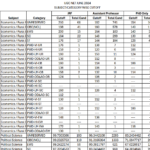


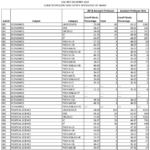


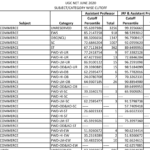
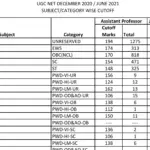
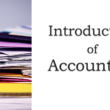
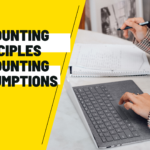
Pingback: GLOSSARY OF ACCOUNT - WebComm.in
excellent